The species
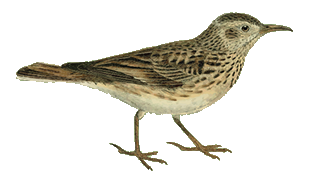
The Dupont’s lark (Chersophilus duponti), replaced in Spanish by the onomatopoeic name “ricotí” which makes reference to its peculiar singing (Bernis, 1971). Spanish: Alondra Ricotí / Catalan: Alosa becuda / Galician: Calandra de Dupont / Basque: Dupont hegatxabala / Portuguese: Portugal-lopirripioa / French: Le Sirli de Dupont.
Identification
It´s a small and stylish passerine bird belonging to the Alaudidae family. It is 18 cm long and it has a wingspan between 26 and 31 cm. Its plumage is similar to the one of other lark populations, that is to say cryptic, with ochre tones, greyish nuances and black thin strips. Its most distinctive morphologic feature is its beak, curved and long, which sometimes can exceed a length of 2cm for males. Difficult to observe in the countryside, because it shows a distant behaviour since it remains hidden for most of the time. Usually, it is hidden in brushwood, advancing quietly by leaps, without flying. It is more active at dawn, flying and singing in the darkness. It has a peculiar and monotone singing, very different from the rest of the lark population.
Mean body mass: 40,2 g for males and 36,2g for females.
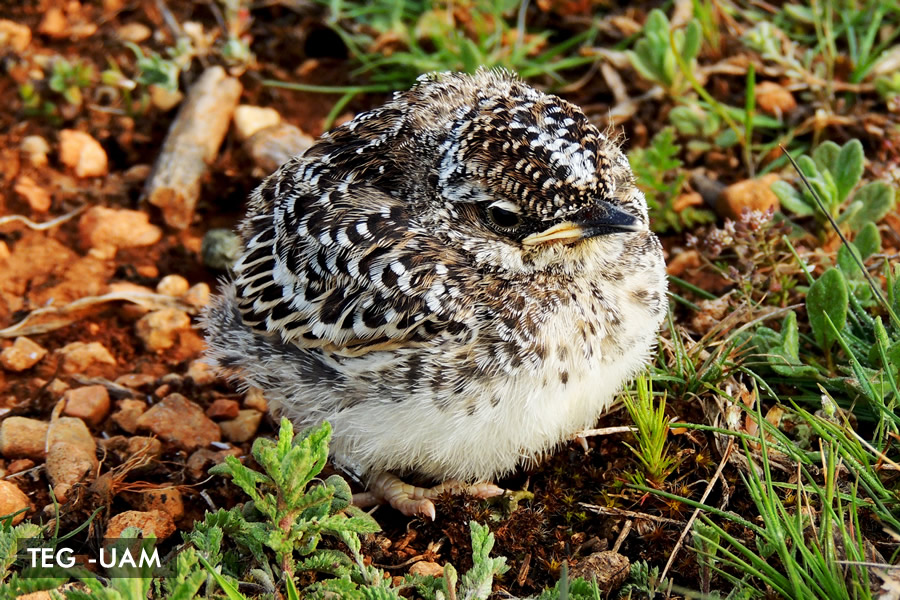
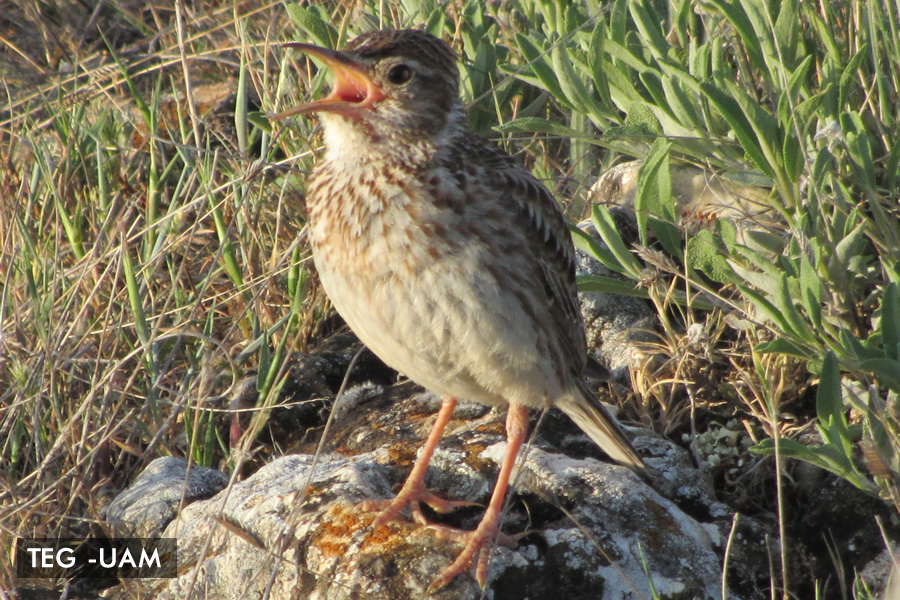
Voice
It has a peculiar singing, referring to its onomatopoeic name “ricotí”. This is a repetitive, melodic and short singing, very different from the rest of the Iberian lark population that it emits on the ground or, especially at dawn, in flight. It is composed of diverse sequences (from 3 to 11 per individual). The last one is the most common one and it corresponds to the land claim, a short and modulated whistle which it’s longer in the end: “tu-tuiíi” or also with three syllables “ti-tu-tuiíi”. This alarm song is emitted in case of territorial intrusion: “tschrr-tschrr”. It can be very variable across populations and, also, between individuals of the same population.
Distribution
The distribution area includes the Iberian Peninsula, the Maghreb (Morocco, Algeria and Tunisia) and the coastal strip of Libya and Egypt. In Spain, the distribution is fragmented, the main core can be found in inland regions. The main core is composed of populations scattered over small areas, which have been grouped into five large natural regions: the Iberian Mountain Range, the Ebro Depression, the northern Spanish Plateau, La Mancha and the south-eastern coast of the Iberian Peninsula. In Morocco, the species lives in three regions: the plateau of Rekkam; Moulouya River, between Midelt and Missour; and the high plateaus of Ain Bni Mathar, on the border of Algeria. In Tunis, its distribution seems to have been reduced to small esparto fields in the region of Fériana. No recent information is available on the populations of Algeria, Libya and Egypt.
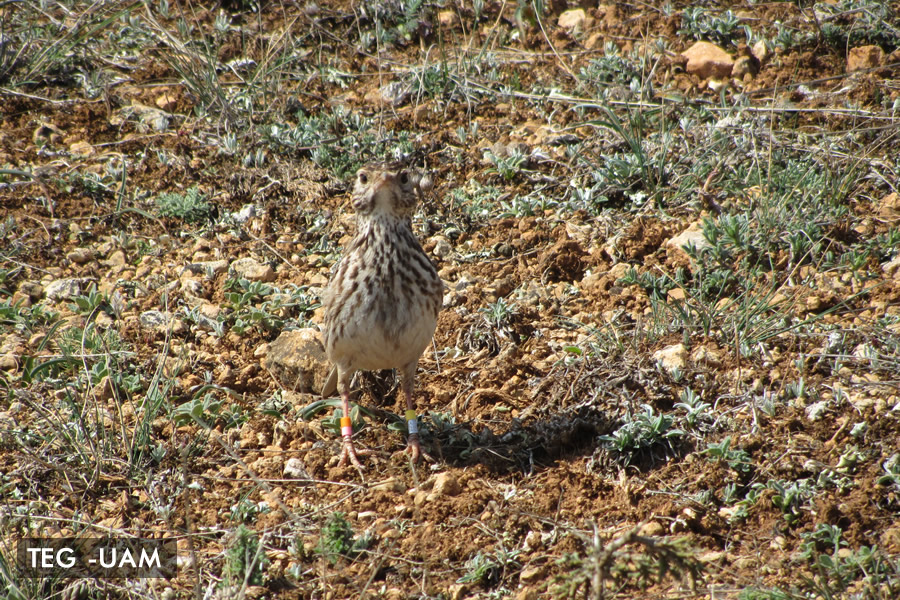
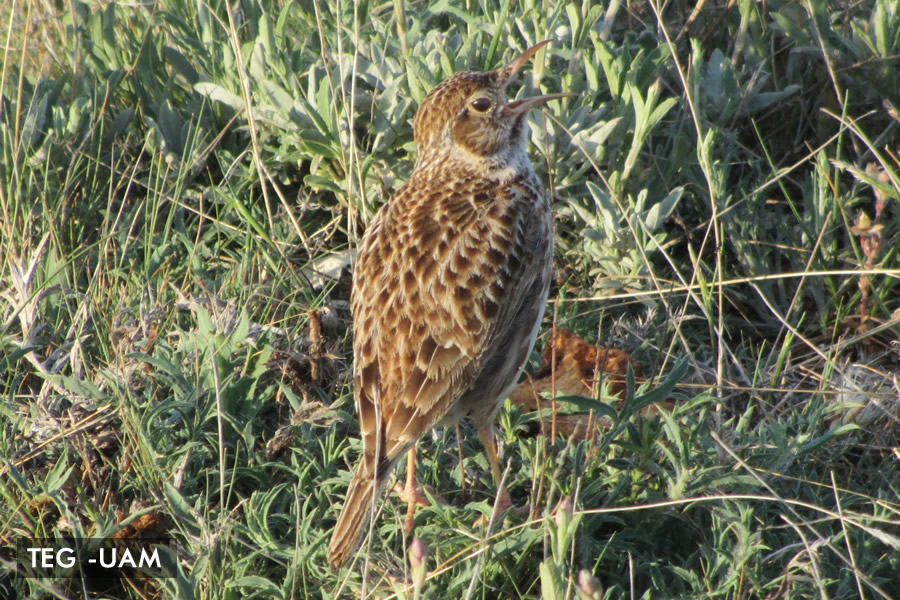
Geographical variation
The Dupont’s lark is divided into two subspecies, Chersophilus duponti dupontí y Chersophilus duponti margaritae. The nominal subspecies, that is to say the North-western Dupont's lark (C. d. duponti) can be found in the Iberian Peninsula, in Morocco, in the northern part of Algeria and in the northwest of Tunisia. The other subspecies, that is to say the South-eastern Dupont's lark (C. d. margaritae) can be found in the southern parts of Algeria and Tunisia, also in the northern parts of Libya and Egypt.
Movements
The Dupont’s lark is a steppe bird that lives in the Iberian Peninsula, remaining in breeding areas during winter. There are registers of dispersion during the autumn, as well as registers of bird migration in villages with most severe weather conditions. Adults do short distance movements and eventually travel over larger distances, with a maximum distance displacement of 2km and an average value of 100m. There are registers of bird juvenile dispersion for more than 30km; this dispersion process can be crucial for the maintenance of isolated populations and for the conservation of the species at a metapopulational level.

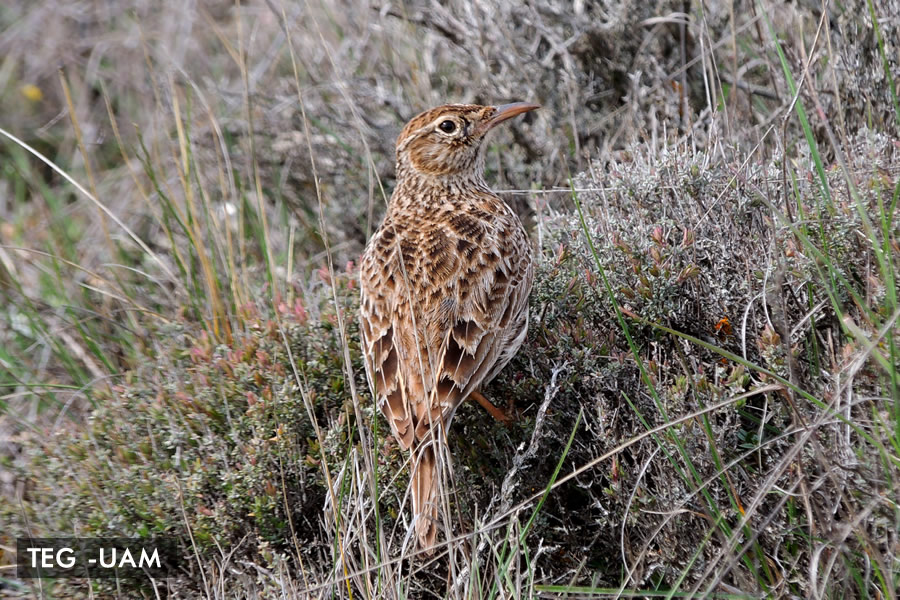
Trophic ecology
It is an insectivorous bird and, eventually, a grain-eater. The diet of young chicken is based on orthopterans, lepidopterans, coleopterans and spiders of the family Lycosidae. Recent studies on the adults’ diet show a consumption of epigean coprophages arthropods.
The reproductive biology
The reproductive period of the Dupont’s lark goes from the final of February to the beginning of July in the Iberian Peninsula, up to three breeding attempts. The Dupont’s lark builds its nest on the ground, under small bushes or herbaceous bushes. It produces three to five eggs in each lay and the incubation period is about 12-13 days. Chicken remain 8 days in the nest, their diet is based on coleopteran and lepidopteran larvae. The Dupont’s lark has a rate between 46% and 84% of depredation in the nest. The secondary sex-ratio amounts to 0.5, showing an equal number of males and females among baby birds. The adult sex-ratio is biased towards males with values between 0.61 and 0.79.
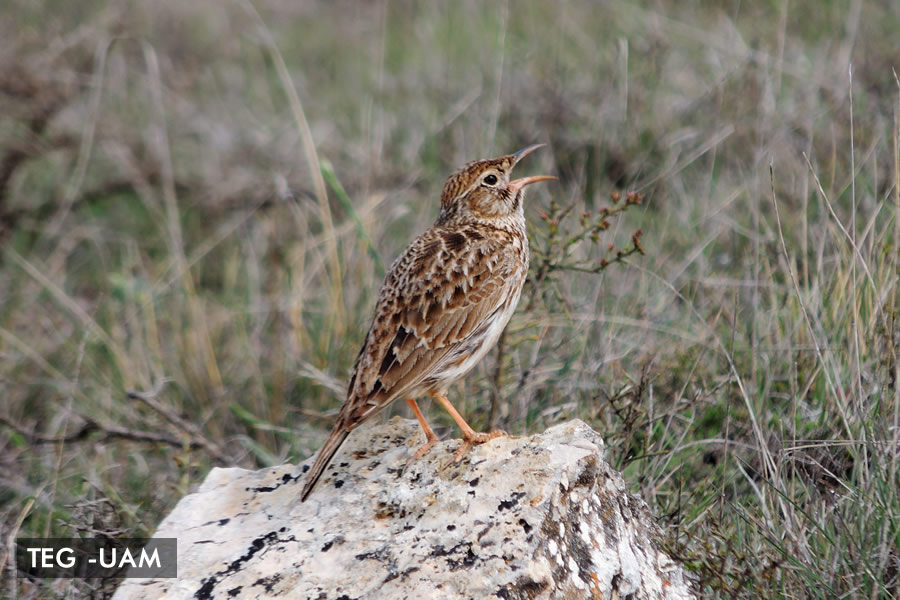
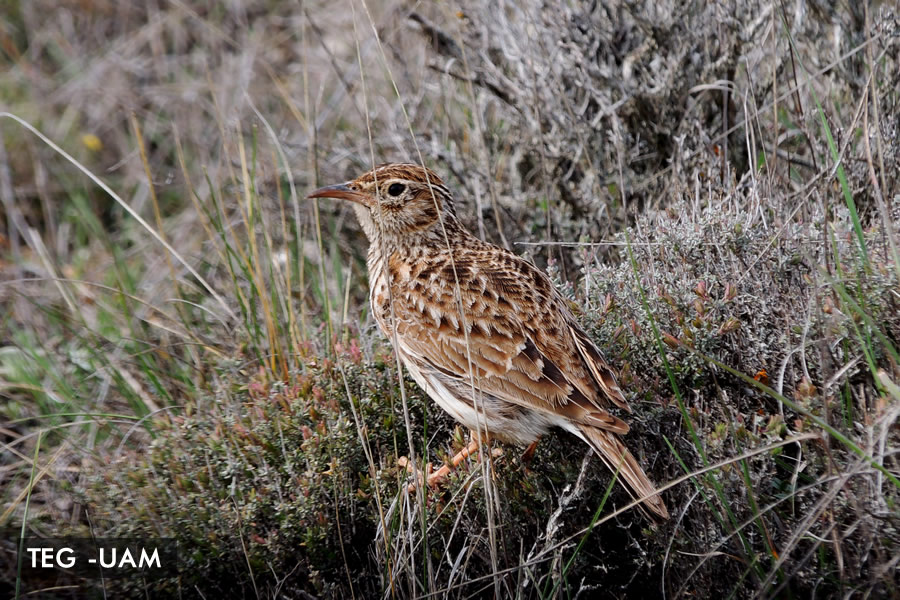
Interactions between species
The domestic cat (Felis catus), the fox (Vulpes vulpes) and the Ocellated lizard (Timon lepidus) have been identified as predators of their nests. The parasites of the Dupont’s lark were poorly studied although they may be common with the ones described in the rest of the lark population. The registered malaria parasite infection rate rises to 9.8%.
Social pattern and behaviour
It has an unsociable and shy behaviour and it is always on the move, periods of greater singing activity take place at dawn or at night. The species has a strong territorial behaviour, with punctual registers in mixed bands in winter. The vital domain is estimated at 7,4ha and the area of the heart at 3,6ha. The vital domain differs between age classes and sexes, between the breeding and post breeding periods, and shows a high inter-annual variation. Its spatial behaviour is very variable, with registers of movements that are 7-8 times higher than the average. It is apparently a monogamous bird, although it may be a social monogamy with extra-pair copulation.
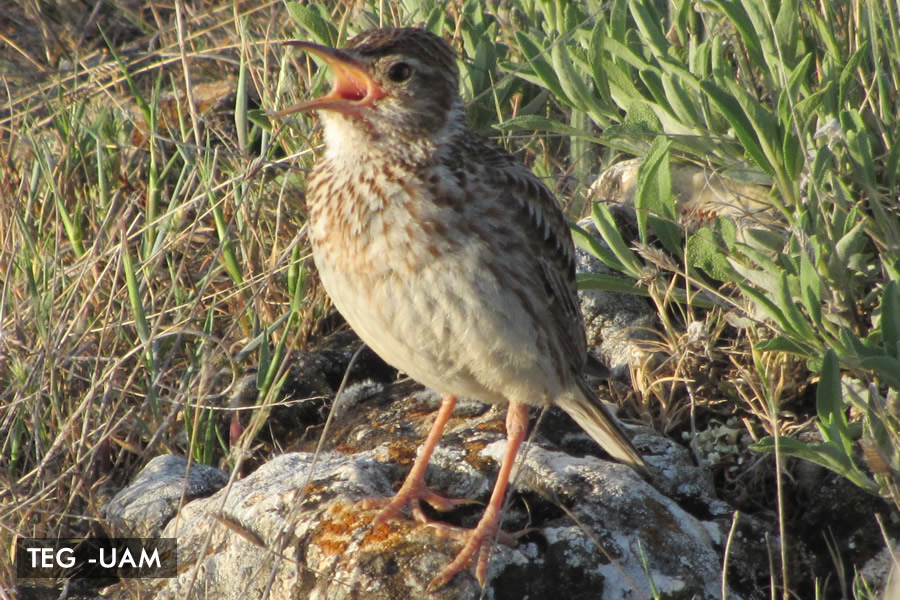
Source
Enciclopedia virtual de los vertebrados españoles (Virtual encyclopaedia on Spanish vertebrates)
Museo Nacional de Ciencias Naturales CSIC (National Natural Science Museum)
Authors
Julia Gómez-Catasús, Adrián Barrero, Vicente Garza y Juan Traba
TEG-UAM (Ecological Research and Ecosystem Preservation Group)
Ecology Department. Autonomous University of Madrid
Publication date: 2-12-2016
Gómez-Catasús, J., Barrero, A., Garza, V., Traba, J. (2016). Alondra ricotí – Chersophilus duponti. En: Enciclopedia Virtual de los Vertebrados Españoles. Salvador, A., Morales, M. B. (Eds.). Museo Nacional de Ciencias Naturales, Madrid. http://www.vertebradosibericos.org
Pictures
TEG - UAM
Copyright © 2020 - Aviso Legal | Acceso | Desarrollado por Cesefor




